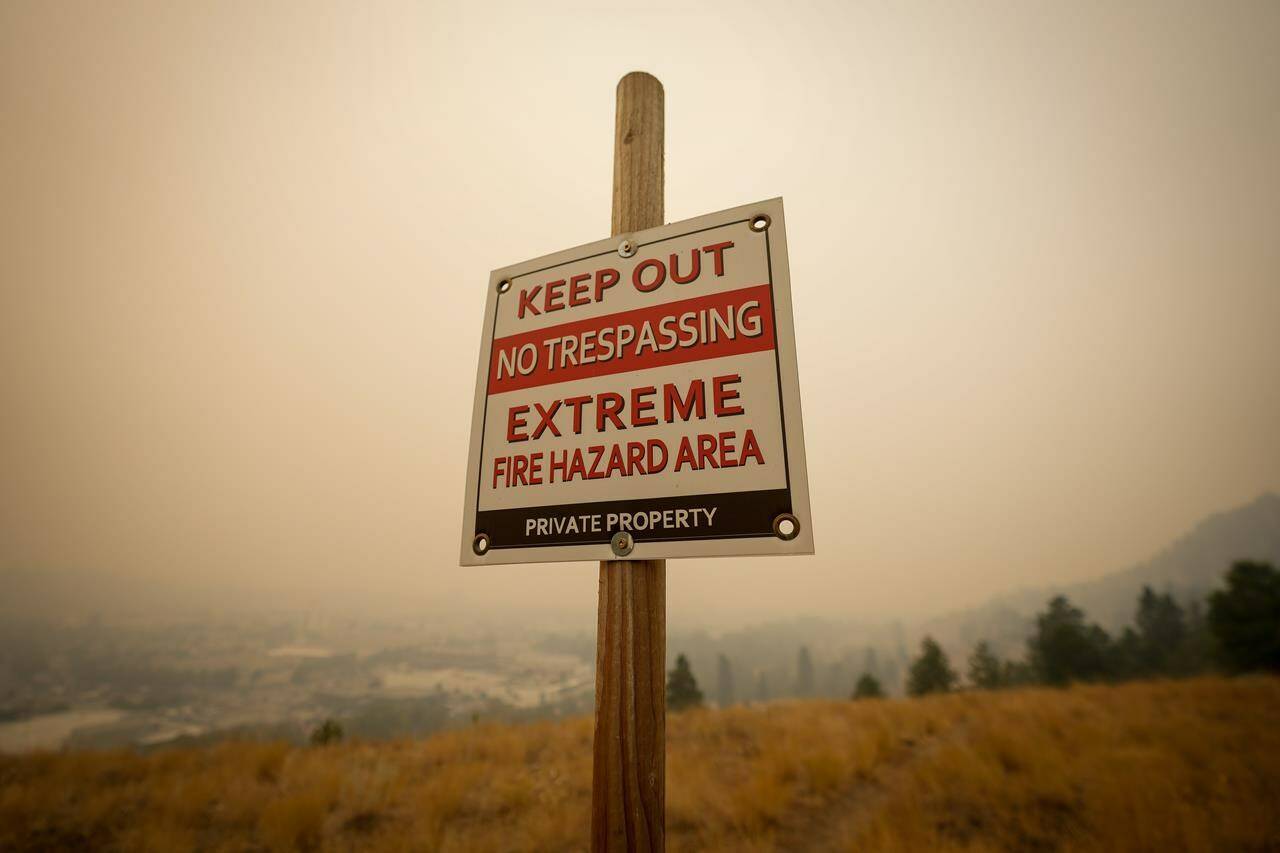Large portions of northeastern British Columbia continue to swelter a day after some areas hit daily record temperatures.
Environment Canada says temperatures will again push near or past 30 C in parts of the Peace River Regional District and the Northern Rockies Regional Municipality.
The heat warning is expected to be in place until this evening.
Historic records for daily high temperatures for Aug. 28 were broken Monday in Fort St. John, Dawson Creek and Fort Nelson.
Fort Nelson reached 33.9 C, almost six degrees higher than the previous record for that day recorded in 1986.
The BC Wildfire Service has cautioned that warm, dry conditions in northern parts of the province have led to increased fire activity in the region, with the Fort Nelson First Nation putting two reserves on alert.
Meanwhile, crews battling a destructive wildfire in British Columbia’s Shuswap region are hoping for help from rain that could begin falling in the area tonight.
Mike McCulley, an information officer with the BC Wildfire Service, says it’s unclear how much rain could aid their efforts as the last amounts varied widely across the 430-square-kilometre Bush Creek East blaze, from just one millimetre to 15.
While fire behaviour has picked up with hot and dry conditions over the last few days, McCulley says there’s been no major growth on the fire, which destroyed or significantly damaged nearly 170 properties just over a week ago.
The nights are getting longer, he adds, which should be “a huge help” in the battle.
The Bush Creek East blaze is among just over 380 active blazes throughout B.C., including 12 “wildfires of note,” meaning they’re highly visible or pose a threat to public safety.
Emergency Management Minister Bowinn Ma said about 8,000 people in B.C. remained evacuated from their homes as of Monday, down significantly from around 30,000 a week ago.
But Ma acknowledged there have been challenges as the province and regional officials shift to post-fire recovery in the Central Okanagan, and that some residents have not been reimbursed after paying for their own emergency accommodation instead of waiting for referrals.
Ma said payments under the Emergency Support Services scheme were supposed to be for evacuees who were unable to pay for their own immediate needs and were “not typically provided retroactively.”
But she said she was aware that the high volume of support requested in West Kelowna had created “abnormally long” wait times, and she had asked local authorities to determine if individual cases may require additional support “with compassion and flexibility.”
Residents who did not receive the support they needed should call a hotline to seek assistance.
Shuswap and Okanagan face infrastructure woes
Major infrastructure woes will confront both the Shuswap and central Okanangan regions, including hundreds of downed power poles and cables.
McCulley, said there are hundreds of burned hydro poles and downed power lines “everywhere.”
Crews are also working to remove “danger trees” that pose a risk to public safety along roads in the area, McCulley said.
John MacLean, director of the emergency operations centre for the regional district, said BC Hydro crews are working to replace infrastructure as quickly as possible.
Neighbourhoods in West Kelowna sustained extensive damage to the power grid and other key infrastructure when the McDougall Creek wildfire swept through nearly two weeks ago, the community’s Fire Chief Jason Brolund told a briefing on Monday.
The damage is especially severe in the West Kelowna Estates area, he said.
“The power poles have burned, the lines are on the ground, the transformers are tipped over. All of that is being removed, and it’s being rebuilt.”
Crews are also assessing whether additional key infrastructure, including the water supply, drainage and roads will need repair or reconstruction, he said.
The number of properties around Okanagan Lake that have been destroyed or significantly damaged ticked up to 189 from 181 after further assessment, officials with the Regional District of Central Okanagan said at the briefing.
Sally Ginter, chief administrative officer for the district, said operations are transitioning to recovery, and residents of areas still under evacuation alert should recheck the district’s database of damaged and destroyed properties.
“Our hearts go out to all who have been impacted by this unprecedented fire event, and particularly to those whose homes have been significantly damaged or lost.”
READ ALSO: West Kelowna wildfire remains out of control at 12,635 hectares
READ ALSO: Increased fire activity expected in North Shuswap wildfire

